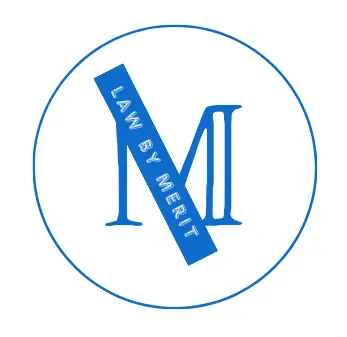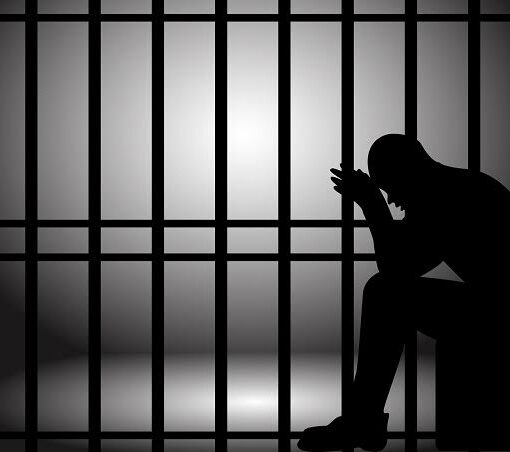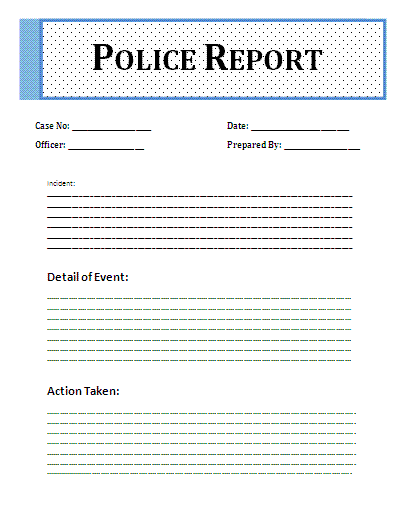In the realm of legal proceedings, both subpoenas and court orders are powerful tools that dictate specific actions or obligations. However, it’s important to differentiate between the two and explore the nuances that set them apart.
Is A Subpoena A Court Order?
Yes, a subpoena is a court order that requires an individual to provide testimony, documents, or other evidence as part of a legal proceeding. It is issued by a court, administrative agency, or attorney and carries legal consequences if ignored or not complied with. Subpoenas play a crucial role in gathering information during investigations and trials, ensuring the availability of evidence and witnesses. They can be issued for civil or criminal cases, and failing to comply may result in contempt of court charges or other penalties.
Subpoena Defined:
A subpoena is a legal document that commands an individual, organization, or entity to provide evidence or testimony in a legal case. It is often used to obtain information that may be relevant to the resolution of a dispute or to establish facts. Subpoenas can be issued by parties involved in the case, such as attorneys, or by the court itself. They play a crucial role in the discovery phase of legal proceedings, allowing parties to gather information and evidence from third parties.
Court Order Defined:
A court order is a directive issued by a judge or court of law that compels a person or entity to take a specific action or refrain from doing something. Court orders cover a wide spectrum of matters, including procedural instructions, injunctions, and determinations of legal rights. They are used to regulate various aspects of legal proceedings and ensure the proper functioning of the legal system. Court orders are legally binding and failure to comply can result in penalties or contempt of court charges.
While subpoenas and court orders share similarities, they have distinct characteristics that set them apart. Here are the key distinctions between the two:
1. Purpose and Focus:
Subpoena: The primary purpose of a subpoena is to obtain evidence or testimony from a third party that is not directly involved in the case. It aims to gather information that may shed light on the facts of the case and support the arguments of the parties.
Court Order: A court order has a broader scope and can cover a wide range of matters beyond evidence collection. It can dictate procedural steps, prohibit certain actions, or mandate compliance with specific legal requirements
2. Issuer and Authority:
-Subpoena: Subpoenas can be issued by parties involved in the case, such as attorneys, as well as by the court. They derive their authority from the legal system and are used to compel the production of evidence or testimony.
Court Order: Court orders are exclusively issued by a judge or court of law. They carry the weight of the court’s authority and are enforceable through the court’s power.
3. Enforcement Mechanism:
Subpoena: Non-compliance with a subpoena may require the party seeking the evidence to seek court intervention to enforce it. This can involve filing a motion to compel compliance.
Court Order: Court orders are directly enforceable by the court. Failure to comply with a court order can result in penalties, fines, or contempt of court charges without the need for additional legal action.
4. Scope and Applicability:
Subpoena: Subpoenas are typically targeted at specific individuals or entities that possess relevant information. They are often used during the discovery phase of a legal proceeding.
Court Order: Court orders can have a broader impact and can affect multiple parties involved in the case. They can also extend beyond the immediate case and influence future actions or behaviors.
5. Duration and Modification:
Subpoena: Subpoenas are usually effective for a specific period and may include deadlines for compliance. They can also be challenged or modified if they are overly burdensome or improperly issued.
Court Order: Court orders can have varying durations and may remain in effect until a specific condition is met or the case is resolved. They can also be appealed or modified through legal channels.
In conclusion, while both subpoenas and court orders are essential components of the legal system, they serve distinct purposes and have unique characteristics. A subpoena is a specific tool used to gather evidence or testimony from third parties, while a court order is a broader directive issued by a judge that can cover various aspects of legal proceedings. While subpoenas can be enforced through court intervention, court orders carry the direct authority of the court and are enforceable without additional legal action. Understanding the differences between these two legal mechanisms is crucial for navigating the complexities of the legal landscape and ensuring a fair and just resolution of legal disputes.
Court Order vs. Subpoena: Differences Between Court Order and Subpoena
1. Court Order:
A court order is a directive issued by a judge or court of law that compels a person or entity to take a specific action or refrain from doing something. It is a powerful legal tool used to regulate various aspects of legal proceedings, including civil and criminal cases. Court orders can cover a wide range of matters, such as requiring a party to produce evidence, maintain a certain behavior, or prevent certain actions.
In essence, a court order is a formalized command that binds parties involved in a legal case to adhere to the instructions provided. Failure to comply with a court order can result in serious consequences, including fines, penalties, or even contempt of court charges. Court orders are often sought to ensure the proper functioning of the legal system and to protect the rights and interests of parties involved.
2. Subpoena:
A subpoena, on the other hand, is a legal document that commands an individual or entity to produce documents, records, or testimony for the purpose of a legal proceeding. It is a means of obtaining evidence or information that may be relevant to a case. Subpoenas can be issued by parties involved in a lawsuit or by the court itself. There are two main types of subpoenas: subpoena ad testificandum (commanding testimony) and subpoena duces tecum (commanding the production of documents or evidence).
Unlike a court order, which is a more general directive, a subpoena is specifically aimed at obtaining evidence or testimony. It is often used to gather information from third parties who may have relevant knowledge or documents that can aid in the resolution of a case. Failure to comply with a subpoena can also result in legal consequences, including contempt of court charges.
3. Distinctions and Purposes:
The primary distinction between a court order and a subpoena lies in their purposes and scope. A court order is a broader concept that encompasses a variety of legal directives aimed at controlling various aspects of legal proceedings. It can be issued for purposes beyond the acquisition of evidence, such as instructing parties to refrain from certain actions or to follow specific procedures.
On the other hand, a subpoena is more narrowly focused on obtaining evidence or testimony from individuals or entities that are not direct parties to the case. Its main purpose is to gather information that may aid in the resolution of the legal matter at hand. While both court orders and subpoenas can carry legal consequences for non-compliance, the specific repercussions may vary depending on the jurisdiction and the nature of the directive.
4. Process and Enforcement:
The process for obtaining a court order versus a subpoena also differs. A court order is typically issued by a judge based on a formal request made by a party involved in the case. The judge considers the merits of the request and issues the order accordingly. Court orders can be appealed or challenged through appropriate legal channels.
In contrast, a subpoena can be issued by an attorney or a party involved in the case, and in some instances, even by the court itself. The party requesting the subpoena must demonstrate that the information or testimony being sought is relevant to the case. Once issued, the subpoena is served to the recipient, who then has a legal obligation to comply.
5. Protections and Limitations:
Both court orders and subpoenas are subject to legal protections and limitations to ensure that they are not abused or used to infringe upon individual rights. Courts have the authority to review and quash subpoenas if they are deemed overly burdensome, irrelevant, or issued in bad faith. Similarly, court orders can be appealed or modified if they are found to be unjust or inappropriate.
It’s important to note that the specifics of court orders and subpoenas can vary significantly depending on the jurisdiction and the type of legal case. Legal professionals must carefully navigate these mechanisms to ensure that they are used appropriately and effectively within the bounds of the law.
6. Confidentiality and Privacy:
One of the key considerations when comparing court orders and subpoenas is their impact on confidentiality and privacy. Court orders can encompass a wide range of matters, including issues related to privacy and sensitive information. When issuing a court order, a judge may take into account the need to protect sensitive personal or business-related information from unnecessary exposure.
Subpoenas, however, often involve the disclosure of information or documents from third parties. This can raise concerns about the potential breach of confidentiality or the exposure of sensitive trade secrets. Many jurisdictions have specific rules and procedures in place to address these concerns, allowing recipients of subpoenas to seek protective orders or to challenge the scope of information being requested.
7. Scope and Reach:
Another important distinction between court orders and subpoenas lies in their scope and reach. A court order can apply to parties directly involved in the case and may have a broader impact on various aspects of the legal proceedings. It can also extend beyond the immediate case and have implications for future actions or behaviors.
Subpoenas, on the other hand, are often targeted at specific individuals, organizations, or entities that may have relevant information or evidence. They are typically issued to third parties who are not directly involved in the case but may possess information that could contribute to its resolution. Subpoenas can reach beyond geographical boundaries, requiring the production of documents or testimony from individuals or entities located in different jurisdictions.
8. Compliance and Enforcement:
Both court orders and subpoenas carry legal obligations for compliance, but the mechanisms for enforcement may differ. A court order, being a directive issued by a judge, is backed by the authority of the court itself. Non-compliance with a court order can result in contempt of court charges, fines, or other penalties, as the court has the power to enforce its directives.
Subpoenas, while legally binding, may require additional steps for enforcement. If a recipient of a subpoena fails to comply, the party that issued the subpoena may need to seek court intervention to compel compliance. This can involve filing a motion to enforce the subpoena and requesting the court to take appropriate action against the non-compliant party.
9. Timeframe and Urgency:
The timing and urgency associated with court orders and subpoenas can vary based on the circumstances of the case. Court orders can be issued at different stages of a legal proceeding and may have varying deadlines for compliance. They can also be subject to appeals or modifications, which can extend the timeline for resolution.
Subpoenas, especially those seeking immediate testimony or the production of documents, may be used to gather time-sensitive information. Parties involved in a case may use subpoenas strategically to obtain crucial evidence quickly. However, recipients of subpoenas may also have the opportunity to request extensions or accommodations if complying within the specified timeframe is burdensome.
10. Impact on Legal Proceedings:
Both court orders and subpoenas play important roles in shaping the trajectory of legal proceedings. Court orders can significantly influence the conduct of a case, dictating how parties should behave, present evidence, or engage in specific actions. They can impact the rights and responsibilities of parties involved and help ensure a fair and orderly legal process.
Subpoenas contribute to the discovery phase of legal proceedings, where parties gather evidence and information to build their cases. By compelling third parties to produce documents or testify, subpoenas can uncover valuable insights that may strengthen a party’s position or expose weaknesses in the opposing side’s arguments. Subpoenas thus serve as a crucial tool for parties seeking a complete and accurate understanding of the facts surrounding a case.
In summary, the distinctions between court orders and subpoenas encompass their purposes, enforcement mechanisms, impact on privacy, scope, compliance, and more. While court orders guide the overall conduct of legal proceedings and carry the weight of the court’s authority, subpoenas focus on obtaining specific evidence or testimony from third parties. Legal professionals must navigate these tools carefully to ensure effective representation and adherence to the rules of the legal system.
RELATED:
I Got A Copyright Infringement Notice From ISP: Here’s Is What It Means
Cops Lights Behind Me: Here’s What Is Means And What To Do
Is Accepting A Deferred Prosecution Agreement An Admission Of Guilt?
Can You Be Fired for Refusing to Lie?
Last updated on: April 24, 2024




